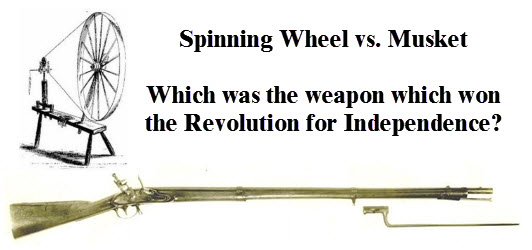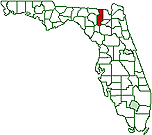The Nonviolent American Revolution Which Led to the 4th of July Celebration of Independence Day
Posted July 4, 2018 01:30 am | Op-Ed

Now comes the 4th of July, when we celebrate how the American colonists used nonviolence to win independence from Great Britain.
You ask, "What? Where did this history lessons come from?" "What about the British War of Reclamation? The war of what?"
As historians dig deeper into the particulars of American colonists’ campaigns against British exploitation, imperiousness, and particularly the oppressive taxation and regulation of the 18th century, they are finding that our vaunted American Revolution was not the 1775-1783 shooting war, but that the decade of nonviolent resistance from 1765-1775 had already achieved revolutionary change.
The British started the shooting war in an attempt to regain control of the nine of 13 colonies that they had, for all practical purposes, already lost.
Author Rivera Sun pointed to the significant civil society participation in some of the most impressive economic costs ever imposed using nonviolent resistance to imperial subjugation:
Some of the most powerful boycotts in nonviolent history occurred in the New England colonies against the British Crown. Though the term boycott would not emerge for another hundred years until the Irish coined it during tenant and land struggles, what the colonists called “nonimportation programs” dropped British revenue in New England by 88 percent between 1774 and 1775. In the Carolinas, colonists deprived the Crown of 98.7 percent of import revenue. Moreover, in Virginia and Maryland, the rate reached an impressive 99.6 percent participation.
Historian Walter H. Conser points out that this is not revisionist history, rather, it is a return to accuracy and the wellsprings of actual American revolutionaries. He quotes Founding Father John Adams:
“A history of military operations . . . is not a history of the American Revolution,” warned John Adams in 1815. “The revolution was in the minds and hearts of the people, and in the union of the colonies; both of which were substantially effected before hostilities commenced.”
The Continental Association—a civil society cross-colony political and economic series of parallel institutions of self-governance was so robust that Crown loyalists and especially British troops suffered social shunning and financial deprivation so widespread that most colonies were no longer profitable to the British empire; instead were costly and increasingly hostile.
Colonies were engaging in workarounds to avoid irritating bureaucratic imperial mandates such as the imposed requirements to use British forms for almost all legal transactions, forms that were printed in England and sold at high prices to colonial units of government. Colonial courts simply began accepting non-British forms as legal, in direct contravention of British order.
This sort of growing official colonial government resistance would have been impossible to generalize without profound acceptance by a populace so tired of British rule that it simply broke away in all its conduct.
American colonial women began spinning their own cloth and making homespun clothing, one of many nonviolent aspects of withdrawing cooperation and support for British control.
More than a century and a half later, Gandhi would emulate these American women in his virtually identical campaign of homespun in India. Gandhi named Thoreau and other American activists and authors as some of his influences and inspirations. Gandhi, in his quest for independence from Brittan, spoke of the importance of people ceasing to purchase foreign cloth and instead make their own clothing (khadi in Hindi) with their own spinning wheels (charka):
"Charkha is the symbol of the nation's prosperity and therefore freedom. It is a symbol not of commercial war but of commercial peace. It bears not a message of ill-will towards the nations of the earth but of goodwill and self-help. It will not need the protection of a navy threatening a world's peace and exploiting its resources, but it needs the religious determination of millions to spin their yarn in their own homes as today they cook their food in their own homes."
For Gandhi in India and for Americans in colonial times, the revolution of the spinning wheel was a part of the revolution seizing independence.
Now, in the time of Trump and the erosion of our freedoms, what measures will bring us the nonviolent American Revolution 200?
We see stirrings from women resisting erosion of reproductive rights, schoolchildren who want better gun laws, and the majority of Americans who are sickened by mistreatment of refugees seeking safety in our borders, borders that used to welcome oppressed “huddled masses,” but are now headed toward Trump’s “great great wall” and are enforced pitilessly by his agents who shred American family values so blatantly.
Happy Interdependence Day. May we find a new American "freedom and justice for all" with a peaceful revolution replacing violent values with those honoring and respecting all humankind.
---------
Tom H. Hastings Ed.D coordinates the Conflict Resolution Undergraduate major and minor degree programs at Portland State University and directs PeaceVoice, a program of the Oregon Peace Institute.
Graphics and layout by the Observer
This piece was reprinted by the Columbia County Observer with permission or license.

 By
Tom H. Hastings
By
Tom H. Hastings